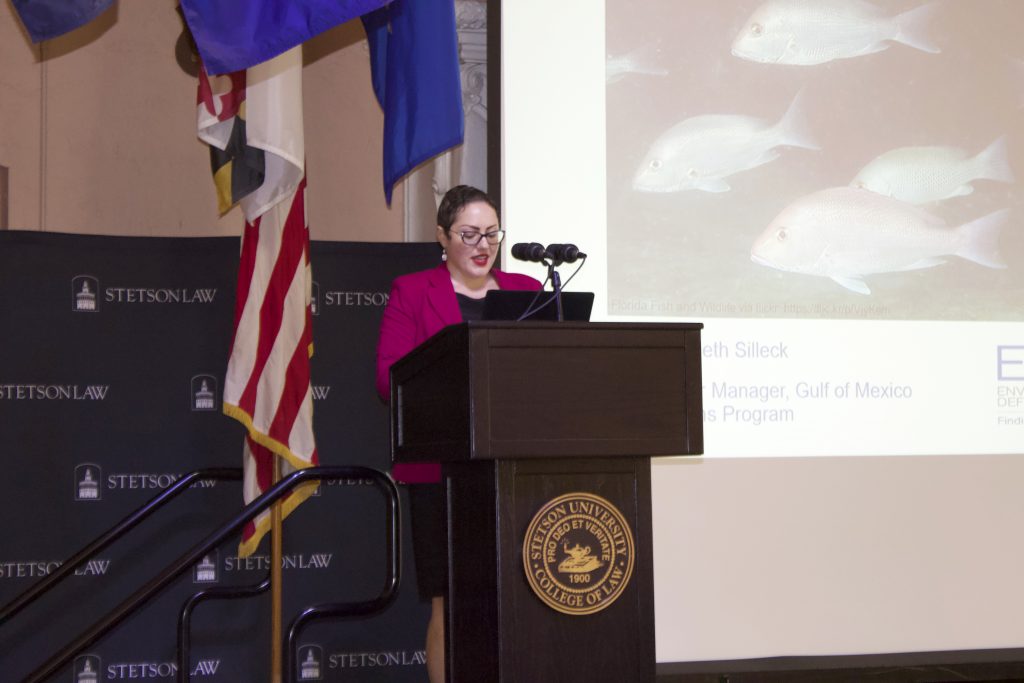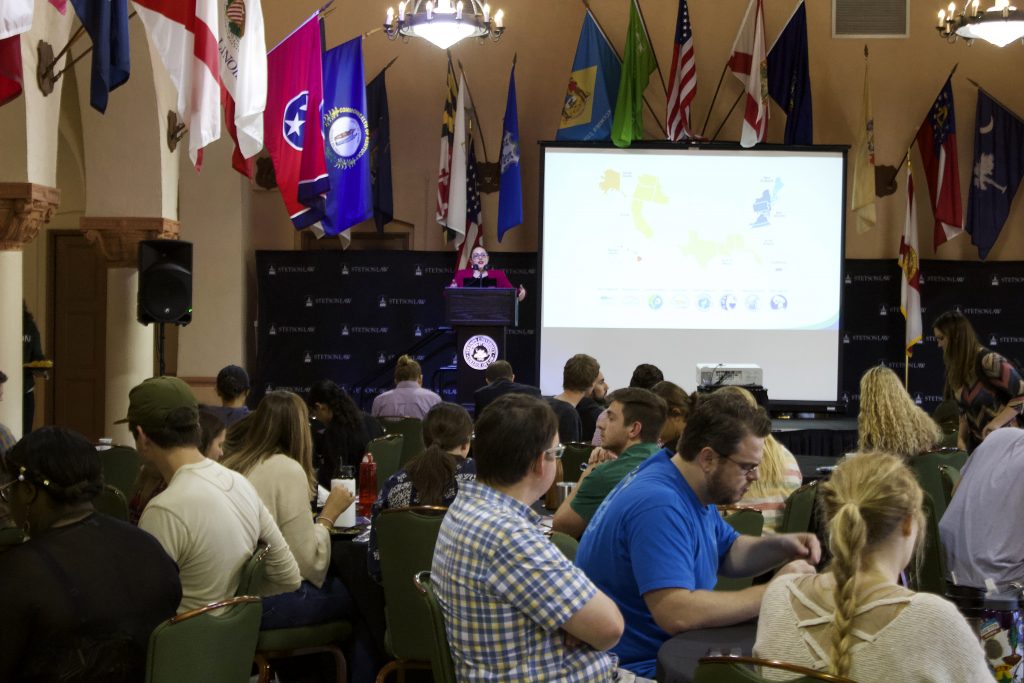Foreman Biodiversity Lecture: The use of rights-based management in preventing overfishing
By Taylor Allyn
Elizabeth Silleck, a senior conservation manager at the Environmental Defense Fund, discussed rights-based management of fisheries as part of the Foreman Biodiversity Lecture series at Stetson University College of Law.
Silleck works with the Gulf of Mexico Oceans Program, the goal of which is to bring fishermen, chefs and communities together to rebuild the fisheries in the Gulf. According to the EDF website, the Gulf of Mexico “supplies more than 40 percent of our domestic seafood and provides billions of dollars a year in wages for the fishing and tourism industries across five states.”
Gulf fisheries have struggled with an overfishing crisis, but significant gains have been made to limit overfishing, turn the fishery around, and provide increased access to local and national communities.

The Magnuson-Stevens Act
The concept of sustainable fishing practices began with The Magnuson–Stevens Fishery Conservation and Management Act (commonly referred to as the Magnuson–Stevens Act) of 1976. Created to prevent foreign fishing fleets from depleting resources off the coast of the United States, the Act also established the regional fishery management structure that currently exists today.
In each coastal area, there are regional councils comprised of representatives from the state, including a representative from each state’s natural resources department. In Florida, the Fish and Wildlife Conservation Commission is represented on both the Gulf council and the South Atlantic council. Customarily, each state has representation from a person affiliated with the commercial fishing sector, and a person affiliated with the recreational fishing sector. According to Silleck, this selection is intended to achieve a balance between not only commercial and recreational interests, but also the interests of the states.
The Magnuson-Stevens Act also required fishery management plans and established the concept of maximum sustainable yield—in other words, how much fishing can occur without jeopardizing the ability of the stock to replenish itself.
Despite this early action and structure, the original Act did not really work to prevent overfishing, Silleck said. It was amended in 1996 and took into account social and economic factors that could affect the maximum sustainable yield. This legislation also introduced requirements to rebuild populations that had been subject to overfishing.
The Act was amended for a third time in 2007, and according to Silleck, this time there were finally teeth in the law. The new iteration of the law required that science-based annual catch limits be established, along with accountability measures for fishery management plans and consequences for breaking the law. For example, a commonly used accountability measure for exceeding the annual catch limit is referred to as a “payback,” in which the next year’s catch limit is reduced by the amount the limit was exceeded. Catch limits are approved by scientists associated with each regional council who understand their regional species and habitats.

Rights-based management
Secure fishing rights – or rights-based management – is used to combat overfishing by aligning economic incentives with sustainability measures, Silleck explained. Under this kind of program, a fishing area or proportion of a catch is allocated to individuals or groups of fishermen.
“The idea is that over time, because people know that they have a secure interest in the fishery, they are going to be more responsible stewards of that portion that they have– because as it grows, they are going to have more fish,” she said.
The benefits of secure fishing rights are ecological, economic, and social, Silleck said. These programs utilize scientific catch limits and reduce the amount of discards in the ocean because they eliminate the race to fish as much as possible. The values of fisheries also increase as do the prices that fishermen can get for their catches.
“We’ve seen here in the Gulf higher prices for the catch that are associated with the fact that it comes from a sustainably managed fishery [and] the fact that you don’t have everybody flooding the market with the same type of fish.”
The potential challenges of rights-based management programs include equity in allocation, she said.
About the Foreman Biodiversity Lecture Series
Stetson Law’s Institute for Biodiversity Law and Policy serves as an interdisciplinary focal point for education, research and service activities related to global, regional and local biodiversity issues. The Foreman Biodiversity Lecture Series brings to campus numerous experts in environmental law and environmental science. You can view Silleck’s complete lecture on the Stetson Law YouTube channel.
Post date: Oct. 19, 2019
Media contact: Kate Bradshaw
[email protected] | 727-430-1580